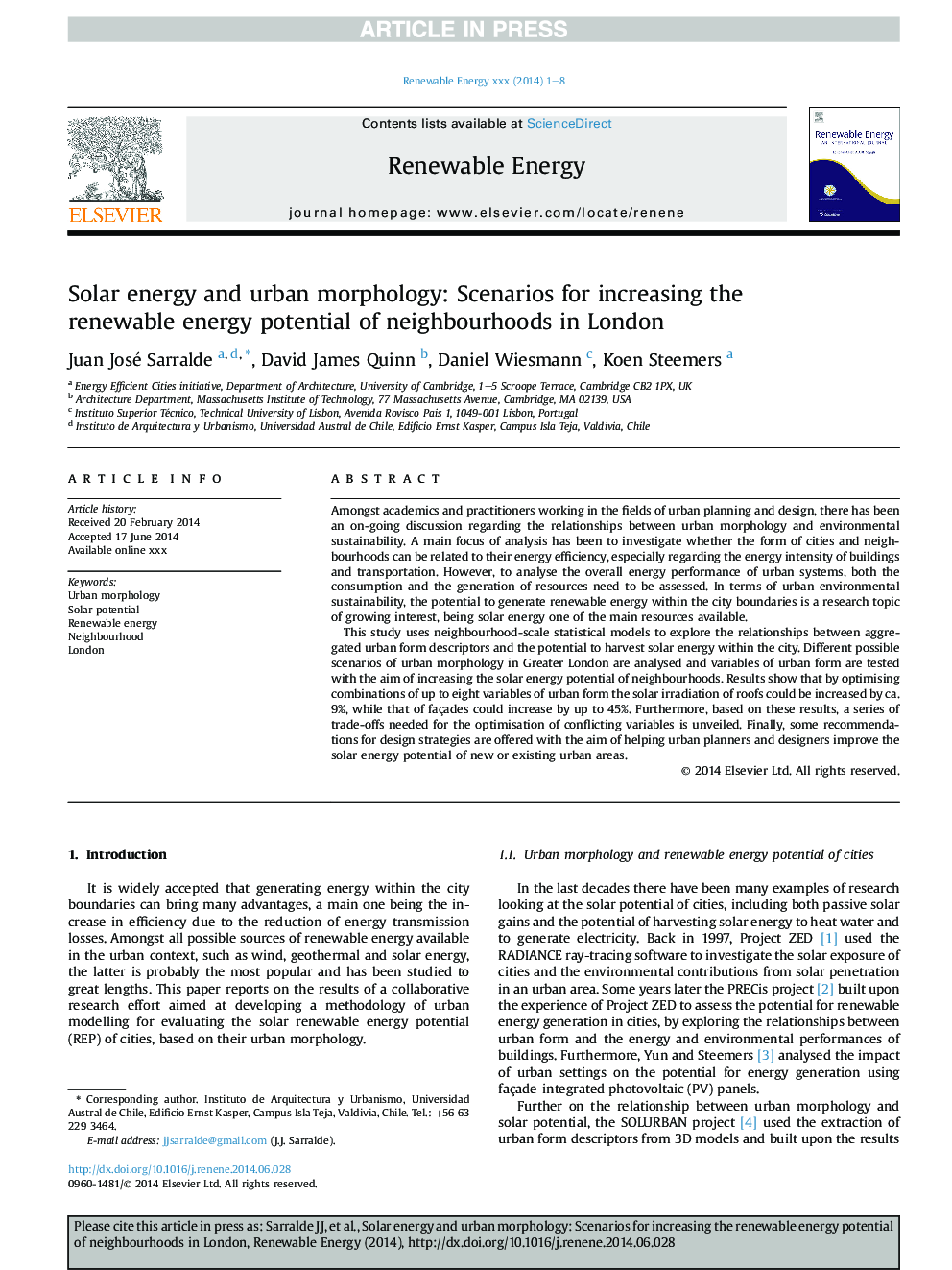| Article ID | Journal | Published Year | Pages | File Type |
|---|---|---|---|---|
| 6767777 | Renewable Energy | 2015 | 8 Pages |
Abstract
This study uses neighbourhood-scale statistical models to explore the relationships between aggregated urban form descriptors and the potential to harvest solar energy within the city. Different possible scenarios of urban morphology in Greater London are analysed and variables of urban form are tested with the aim of increasing the solar energy potential of neighbourhoods. Results show that by optimising combinations of up to eight variables of urban form the solar irradiation of roofs could be increased by ca. 9%, while that of façades could increase by up to 45%. Furthermore, based on these results, a series of trade-offs needed for the optimisation of conflicting variables is unveiled. Finally, some recommendations for design strategies are offered with the aim of helping urban planners and designers improve the solar energy potential of new or existing urban areas.
Related Topics
Physical Sciences and Engineering
Energy
Renewable Energy, Sustainability and the Environment
Authors
Juan José Sarralde, David James Quinn, Daniel Wiesmann, Koen Steemers,
